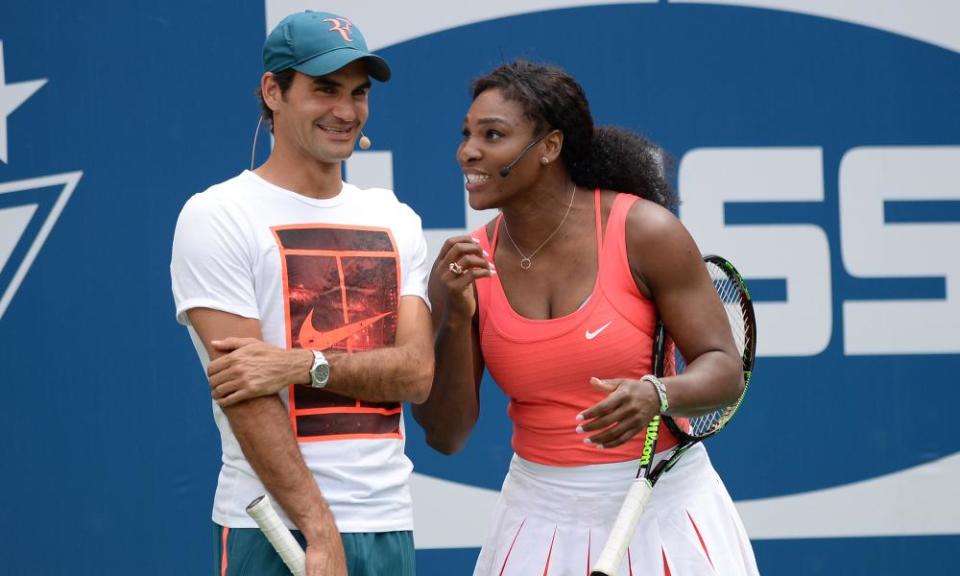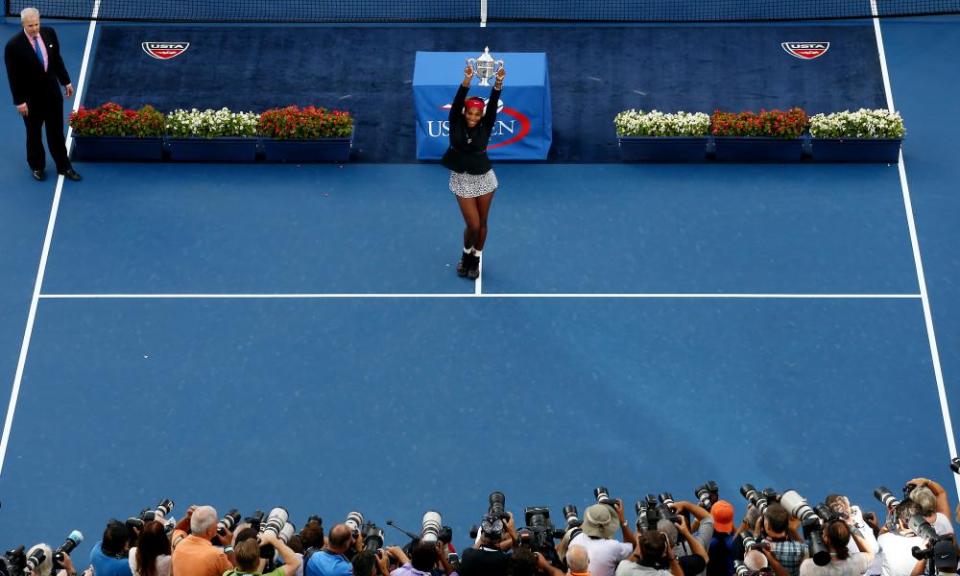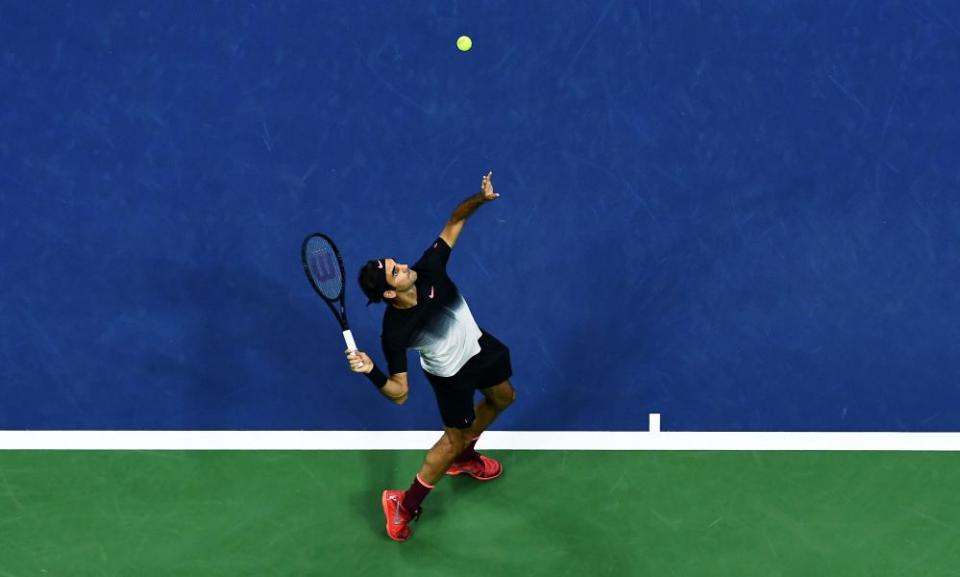How Roger Federer and Serena Williams came to see themselves in each other
Ahead of what will be their 18th US Open main draw appearance, Serena Williams and Roger Federer are far more than a warrior and a maestro

A few weeks before this year’s US Open, Roger Federer turned 37. A few weeks after the tournament, Serena Williams will do the same. There is not much more that can be said about these two; the improbability of their now two-decade long reign over tennis has been exhaustively documented, as has the mixture of grace and grit with which they’ve served as the sport’s ambassadors.
It is strange, however, to think about how differently the stories of Federer and Williams began, and how similar they’ve become. For years now, they’ve defied forecasts of their demise – for Federer, a few early-round losses in the spring of 2007 led to headlines claiming he’d lost a step; for Williams, even earlier, when she first evinced a casual interest in fashion, or when she suffered her first blood clots after she won Wimbledon in 2010. But now, in 2018, with five kids between them and players half their age hot on their tails, they’re entering the year’s final major as not just two of the odds-favorites, but the indisputable fan favorites at the US Open as well.
The affection for the pair is no shoo-in. American sport has an historic love affair with the underdog, the Cinderella story, the upset. It’s why we call it the Miracle on Ice, why we Remember the Titans, why we loved Douglas over Tyson, UMBC over UVA; and it’s why fans tire of the sustained brilliance of teams like the Patriots and the Warriors, whose Goliath-like status is often met with sneers of boredom. One would think Federer and Williams would begin to wear on us, too, especially in a city like New York, which embraces and dispatches its darlings with the speed of a 7 train racing out to Flushing Meadows.
And yet, for the next two weeks, the grounds at the Billie Jean King National Tennis Center will be awash in RF hats, the signature accessory of Federer’s loyal apostles. Practically everyone will be hoping Williams wins her first major since giving birth last fall (she looked strong in her opener on Monday night). It will be the 18th US Open for both Federer and Williams, and few would argue they haven’t earned the string of primetime matches the tournament will confer on them.

But their relationship with the Open has not ever been thus. Arthur Ashe Stadium, of course, was the sight of Williams’ lowest lows: the bad line calls against Jennifer Capriati in 2004 that helped usher in the sport’s adoption of Hawkeye, and her profanity-laced tirades in matches against Kim Clijsters and Sam Stosur. There was also her shocking loss to Roberta Vinci in the 2015 semi-finals, when she was just two matches from completing a calendar-year slam. When Venus, after winning her opening-round match Monday, talked about having the crowd behind her, one was reminded how long it took for American tennis to truly celebrate the sisters Williams. The Swiss, meanwhile, has not won in New York since 2008, and dramatic semi-final losses to Novak Djokovic have led to displays of his occasional churlishness in defeat.
But it’s these pendulum-like swings in their fortunes that make their appearances at the Open so climactic. In contrast to Wimbledon, where Federer and Williams have combined for 15 titles and demand a kind of detached, even compulsory reverence, New York loves them as athletes but also cults of personality, brands unto themselves. In the weeks before and after the tournament, they regularly host pop-up shops and attend fashion shows, mingling with Anna Wintour and the city’s top brass. It’s the tournament where their status as the sport’s joint figureheads – on the court and in its coffers – is most fully realized.
It’s not often we discuss Federer and Williams together, as remarkable stories of parallel success born one month apart. Tennis pundits are more likely to focus on their primacy in the men’s and women’s games individually; Federer, for his, Nadal, Murray and Djokovic’s unprecedented 15-year-long command over men’s tennis, and Williams for being the greatest women’s player of all time, a designation that in the last five years has become increasingly airtight.

This could be attributed, in part, to optics. Federer, the white man with the debonair Swiss-German lilt, happens to excel at a sport fashioned in his image. Williams, on the other hand, has remade the sport in her own, batting down constant sexism and country-club racism since she and Venus were teenagers. As Federer told the Wall Street Journal recently, “She had a totally different upbringing – I came up through Switzerland with the federation, she did it with her dad and her sister.”
The origin stories couldn’t be more different – Williams, from Compton, home-schooled and self-taught; Federer, from Basel, a cantankerous prodigy. And while the pair ascended side-by-side, they still rarely found themselves dominating at the exact same time. His bull run from 2004 to 2007 coincided with Williams’ patches of absence, while her gilded years were the ones just before and after Federer’s stretches of near-unbeatability.
But when we tell our grandkids what it was like to witness the golden age of tennis, it’s Federer and Williams we’ll be talking about, and not exactly as Yin and Yang. We extol Federer’s elegance, the painterly finesse, but less so his athleticism and physical strength. With Williams, we talk overwhelming power and mental fortitude, but not enough of strategy, accuracy, and her incredibly high tennis IQ. Over two decades, we’ve imposed on them narratives that are easy to digest: Federer as maestro, Williams as warrior.
As they’ve aged, however, the two have clearly come to see themselves in one another. After winning her first-round match at Wimbledon, Williams was asked when she’d retire. “Oh, I’m just playing until Roger stops,” she said. “We in it together. As long as he’s here, I’m going to try to be here.”
Federer, days earlier, called Williams “the greatest tennis player of all time,” adding the word “overall” when asked to clarify if he meant to say “women’s tennis player.”
Williams’s response? “I feel the same way about him.”
All of which is to say that, in both age and eminence, Federer and Williams are more alike than they different; the tendency, though, to view men’s and women’s tennis in a vacuum has at times distracted from how extraordinary it is that we get to witness them simultaneously. For no less than a decade, we’ve prophesied what the sport will look like once the two retire. And yet, as another US Open starts, a post-Williams, post-Federer tennis landscape is as inconceivable as it’s ever been.
